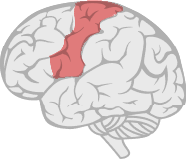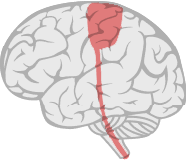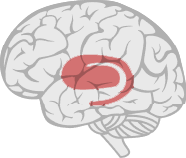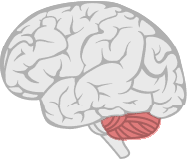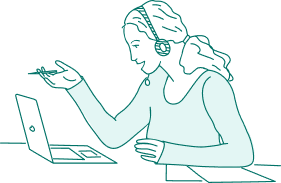What is mixed cerebral palsy?
 Mixed cerebral palsy happens when a child shows signs of more than one type of CP. It often develops due to damage in multiple areas of the brain that control movement and coordination.
Mixed cerebral palsy happens when a child shows signs of more than one type of CP. It often develops due to damage in multiple areas of the brain that control movement and coordination.
Some parents notice early signs like stiffness, low muscle tone, or delays in rolling or sitting. Others receive a diagnosis after their child misses key developmental milestones. In many cases, families are left without clear answers about what caused the condition.
Cerebral Palsy Guide is committed to helping families affected by all types of cerebral palsy. Our team includes labor and delivery nurses with decades of combined experience supporting parents through complex birth injuries.
“My niece has cerebral palsy from a traumatic birth. I’ve watched her go from a wheelchair to walking and living on her own. I understand what this journey is like, and I speak with parents every day who are still looking for answers.”
— – Kristin Proctor, On-Staff Registered Nurse
If your child was diagnosed with mixed cerebral palsy or is showing signs, our nurses are here to help you understand what happened and what steps to take next.
Some families may qualify for cerebral palsy financial support to help cover lifelong care. Insurance often falls short, and out-of-pocket costs can add up quickly.
So far, we’ve helped families across the country recover over $1 billion. See if we can help you, too.
Mixed cerebral palsy symptoms
Because every child with cerebral palsy is different, the symptoms of mixed cerebral palsy can vary widely. Most children show a combination of movement challenges from more than one CP type, and the severity often depends on how much of the brain was affected.
The most common signs of mixed-type cerebral palsy involve problems with movement, balance, and muscle control.
- Abnormal reflexes
- Exaggerated or jerky movements
- Poor posture
- Tremors or shakiness
- Trouble with coordination and motor planning
Although mixed cerebral palsy can involve features from any combination of CP types, the most common patterns are spastic/athetoid and spastic/ataxic.
Early signs of mixed CP in babies
 Mixed cerebral palsy is not always diagnosed right away. Many parents notice something is off before a doctor confirms anything. These red flags may point to brain damage that occurred during or shortly after birth, especially when multiple areas of the brain were affected.
Mixed cerebral palsy is not always diagnosed right away. Many parents notice something is off before a doctor confirms anything. These red flags may point to brain damage that occurred during or shortly after birth, especially when multiple areas of the brain were affected.
Here are 5 early red flags to watch for:
- NICU stay after birth
Babies with oxygen loss, low Apgar scores, or other complications may need care in the neonatal intensive care unit (NICU). This is sometimes the first sign of a serious birth-related injury. - Cooling treatment
If your baby was placed on a cooling blanket or received therapeutic hypothermia, this often means doctors were trying to limit brain damage after a traumatic delivery. - Unusual muscle tone
Babies with mixed tone cerebral palsy may feel either too stiff or too floppy. They may have difficulty holding their head up or supporting their limbs. - Missing early milestones
Delays in rolling over, sitting up, crawling, or babbling are early developmental delays that may point to cerebral palsy. - Trouble moving both sides of the body
Your baby may appear weaker on one side, have trouble reaching, or seem to favor one hand or leg very early on.
These signs are sometimes dismissed or explained away. If you’re unsure what’s causing your child’s symptoms, our team can help you find answers.
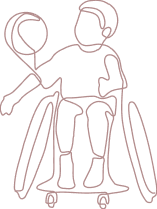
Causes of mixed cerebral palsy
Mixed cerebral palsy is caused by brain damage to more than one area of the brain. This often happens during pregnancy, labor, or shortly after birth. When multiple motor control centers are affected, it can lead to overlapping symptoms from different types of CP.
- Brain bleeds before or during delivery (intraventricular hemorrhage)
- Infections during pregnancy or in the newborn period
- Lack of oxygen at birth (birth asphyxia or hypoxia)
- Meningitis in the first weeks of life
- Severe, untreated jaundice after birth (kernicterus)
- Stroke or blocked blood flow in the brain
Certain conditions can increase the risk of brain damage, including placental problems, premature birth, and prolonged labor. Delivery teams are trained to manage these situations, even in emergencies. If they fail to do so, it may be considered medical malpractice.
If you’re unsure what caused your child’s condition, our nurses can help you find answers. Remember, it’s always free to talk with our team.
Other types of cerebral palsy
Children with mixed cerebral palsy often show symptoms from more than one type of CP. Understanding the main cerebral palsy types can help parents recognize how different movement issues may appear in a mixed diagnosis.
The four main types of cerebral palsy are:
- Spastic cerebral palsy: Most common type, high muscle tone causes stiffness, tightness, and jerky or awkward movements
- Athetoid or dyskinetic cerebral palsy: Muscle tone fluctuates between stiff and loose, leading to writhing or uncontrolled movements
- Ataxic cerebral palsy: Poor balance and coordination affect walking, posture, fine motor skills, and precise movements
- Hypotonic cerebral palsy: Low muscle tone results in floppy muscles and trouble with head control, sitting, or other voluntary movements
Children with mixed-type CP may experience signs from two or more of these categories, depending on where the brain was injured and how severe the damage is.
Mixed cerebral palsy and types of brain damage
Mixed cerebral palsy is caused by damage to more than one area of the brain that controls movement. The combination of symptoms depends on which parts of the brain were affected and how severe the injury was.
Below are the main brain regions linked to different types of CP symptoms.
Damage to motor cortex
 Associated with spastic cerebral palsy
Associated with spastic cerebral palsyThe motor cortex controls voluntary movement. Damage here is linked to spastic cerebral palsy, which causes stiff muscles. When both sides are affected, it can lead to spastic quadriplegia, a severe form of CP that impacts all four limbs and often limits head and neck control.
Damage to pyramidal tracts
 Associated with spastic cerebral palsy
Associated with spastic cerebral palsyThe pyramidal tracts help carry signals from the brain to the muscles. If these signals are disrupted, a child may have trouble moving, walking, or controlling their limbs. This damage is also associated with spastic CP and may lead to muscle tightness and rigidity.
Damage to basal ganglia
 Associated with athetoid cerebral palsy
Associated with athetoid cerebral palsyThe basal ganglia help control posture and involuntary movements. Damage here can lead to muscle tone that shifts between floppy and tight, as well as writhing or jerky movements. These symptoms are often seen in athetoid cerebral palsy, which may appear in mixed CP cases.
Damage to cerebellum
 Associated with ataxic or athetoid cerebral palsy
Associated with ataxic or athetoid cerebral palsyThe cerebellum helps with balance and coordination. Injuries to this part of the brain can cause ataxic or athetoid symptoms, such as tremors, poor balance, and trouble with fine motor skills like grasping or writing.
Treatment for mixed cerebral palsy
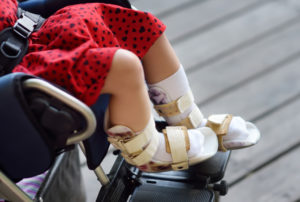
Treating mixed cerebral palsy can be expensive, especially when care is needed for life. But a cerebral palsy lawsuit settlement can help cover the cost of therapies, mobility aids, and lifelong support your child may need.
Most treatment plans are tailored to each child’s symptoms and may combine several approaches.
Physical therapy
Builds strength, balance, and flexibility through guided exercises, stretches, and supportive equipment. May include water-based therapy or other hands-on techniques.
Occupational therapy
Helps improve coordination for daily tasks like feeding, dressing, and playing using games, tools, and repetition.
Speech therapy
Supports speech, swallowing, and communication through jaw exercises, word formation, and language development.
Medication
Used to manage muscle tone, seizures, or behavior. Anticholinergic drugs may reduce involuntary movements.
Surgery
May relieve tight muscles or improve mobility, especially in children with severe spasticity or athetoid symptoms.
Treatment for mixed cerebral palsy can improve independence and quality of life. However, many are expensive and not fully covered by insurance. We can help you understand your options.
Get help for your child’s cerebral palsy
If your child has been diagnosed with any type of cerebral palsy, the right support can make a life-changing difference. CP often causes complex, lifelong challenges — and many families are caught off guard by how much care may be needed.
A cerebral palsy lawsuit may help you afford treatment, therapy, and support services, lessening the financial burden and providing your child with the best future possible.
If something felt off during labor or delivery, or if your child spent time in the NICU, you may be questioning what happened. One preventable medical mistake could have caused the brain damage that led to your child’s condition.
Cerebral Palsy Guide is here to help families affected by CP and other birth injuries. Our network of trusted lawyers has recovered over $1 billion for families nationwide.
Call our trained patient advocates at (855) 220-1101 or get a free case review right now to find out how we can help.




